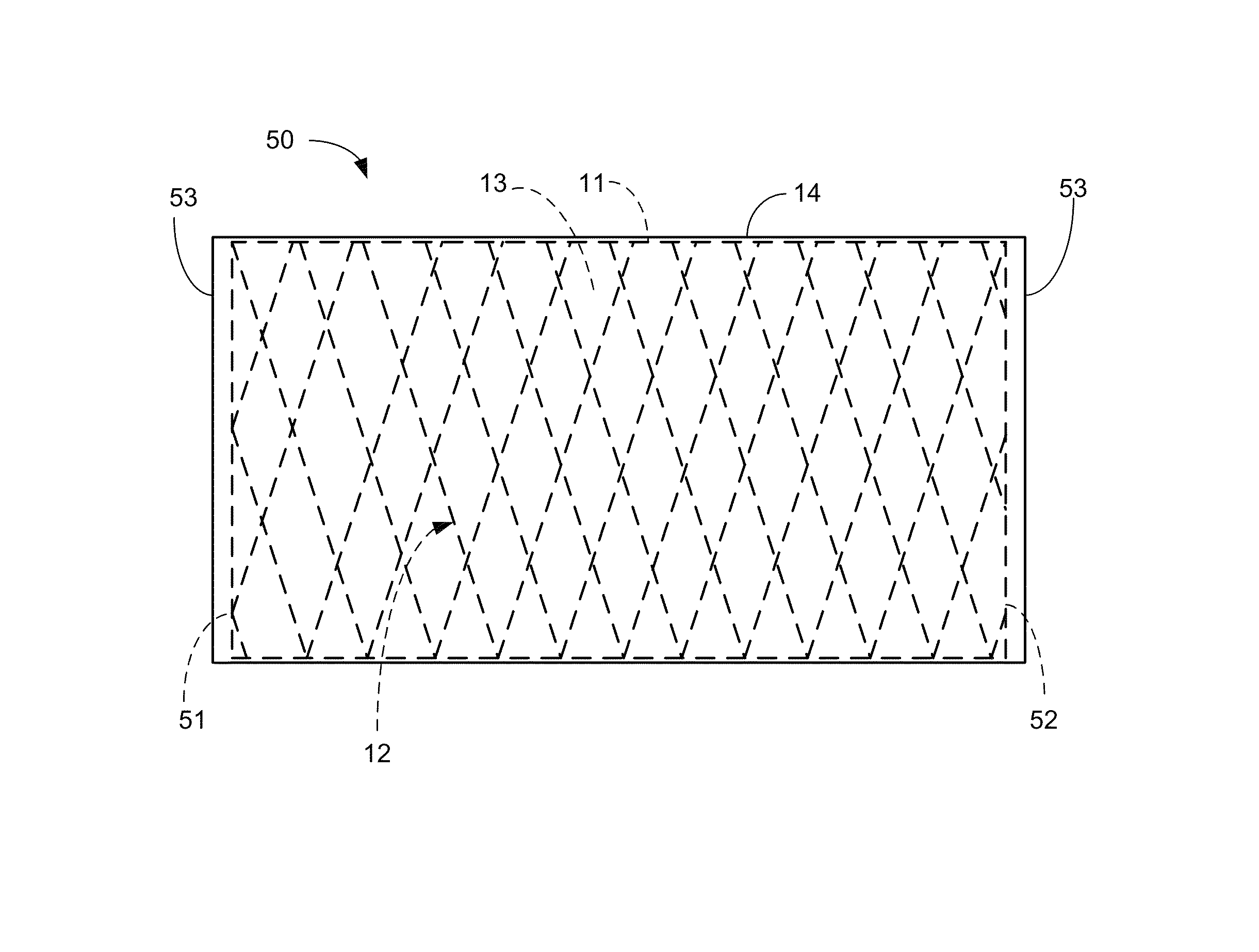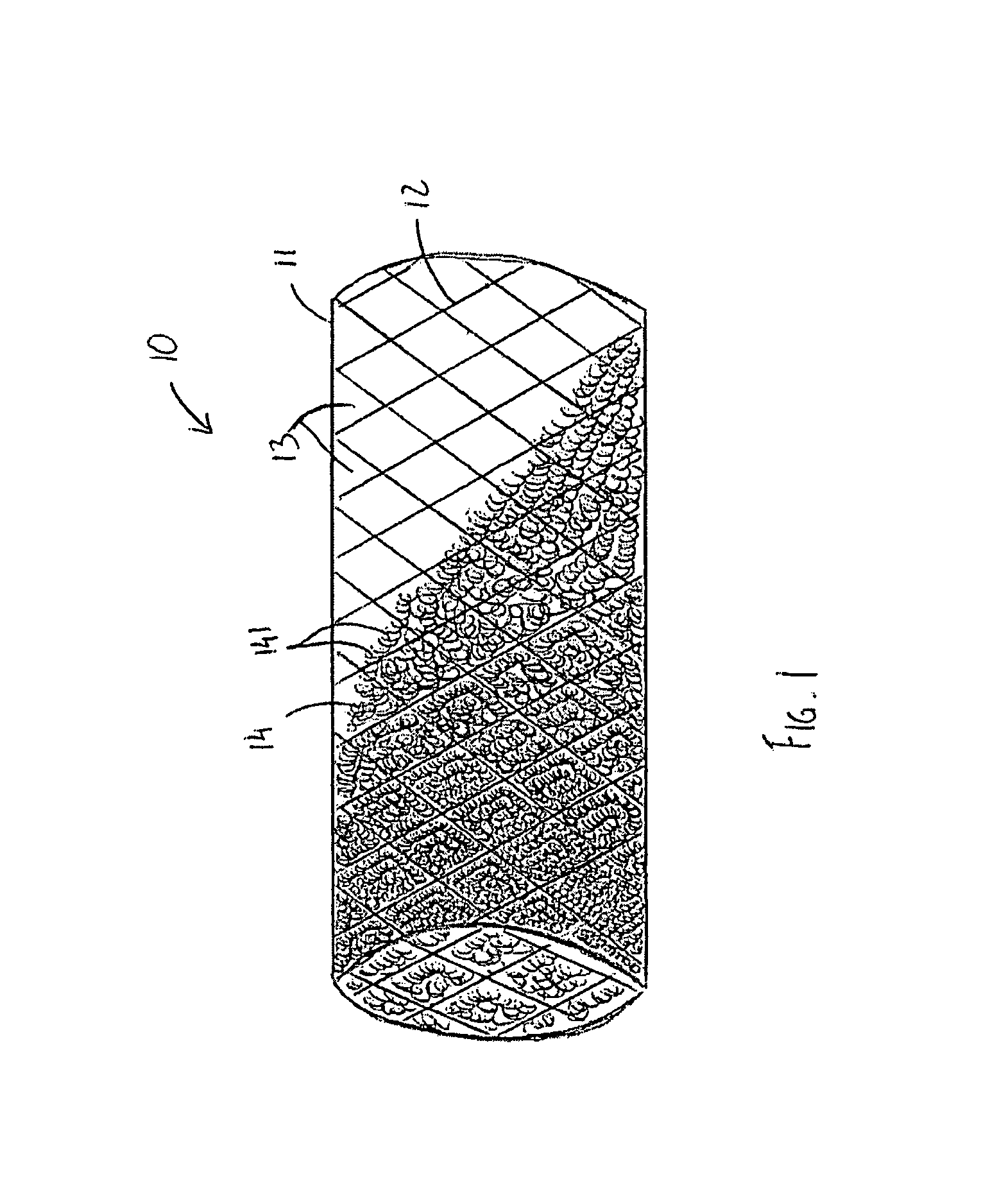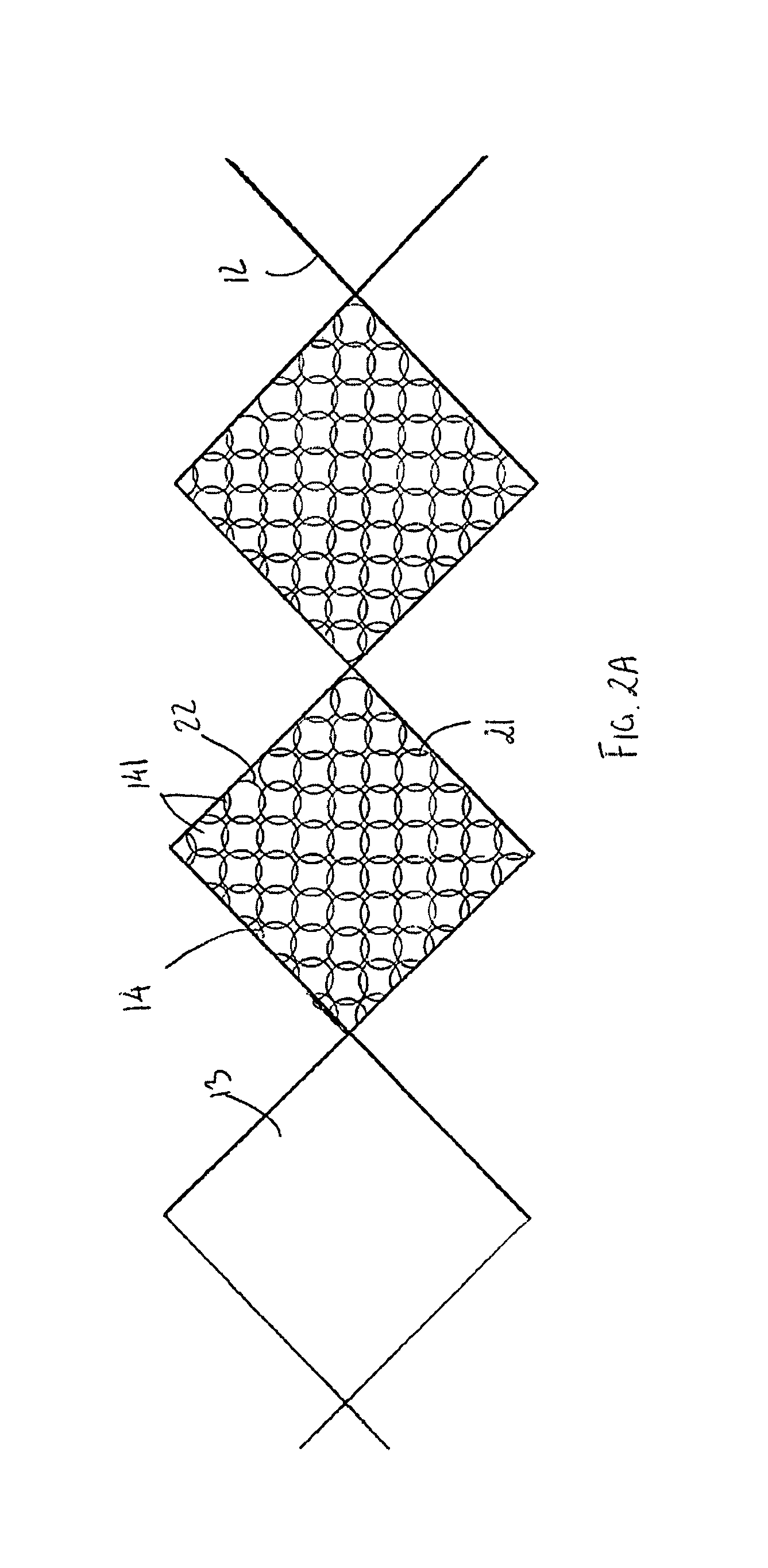Intravascular device with netting system
a technology of intravascular devices and netting, which is applied in the field of intravascular devices, can solve the problems of neointimal hyperplasia or restnosis, poor vascular permeability, and inability to fully absorb blood, so as to reduce the occurrence of thrombosis, reduce the risk of abrasion, and minimize the protrusion of tissu
- Summary
- Abstract
- Description
- Claims
- Application Information
AI Technical Summary
Benefits of technology
Problems solved by technology
Method used
Image
Examples
Embodiment Construction
[0029]As illustrated in FIG. 1, there is shown in accordance with an embodiment of the present invention, an expandable intravascular device, such as a stent, for keeping open a lumen of a previously constricted intravascular site and for minimizing tissue debris from such a site from closing off the lumen. The device, in an embodiment, may also be used for local delivery of at least one pharmacotherapeutic agent to the intravascular site for the treatment or prevention of restenosis resulting from thrombus formation.
[0030]The intravascular device 10, as illustrated in FIG. 1, includes a substantially tubular body 11 for placement against a vessel wall and structural support thereof. The body 11, in an embodiment, may be defined by an expandable framework 12 having a plurality of openings 13. As the stent 10 is used to maintain an opening at a site which may have been previously constricted to provide a passage therethrough, the expandable framework 12 of stent 10 needs to be made f...
PUM
 Login to View More
Login to View More Abstract
Description
Claims
Application Information
 Login to View More
Login to View More - R&D
- Intellectual Property
- Life Sciences
- Materials
- Tech Scout
- Unparalleled Data Quality
- Higher Quality Content
- 60% Fewer Hallucinations
Browse by: Latest US Patents, China's latest patents, Technical Efficacy Thesaurus, Application Domain, Technology Topic, Popular Technical Reports.
© 2025 PatSnap. All rights reserved.Legal|Privacy policy|Modern Slavery Act Transparency Statement|Sitemap|About US| Contact US: help@patsnap.com



